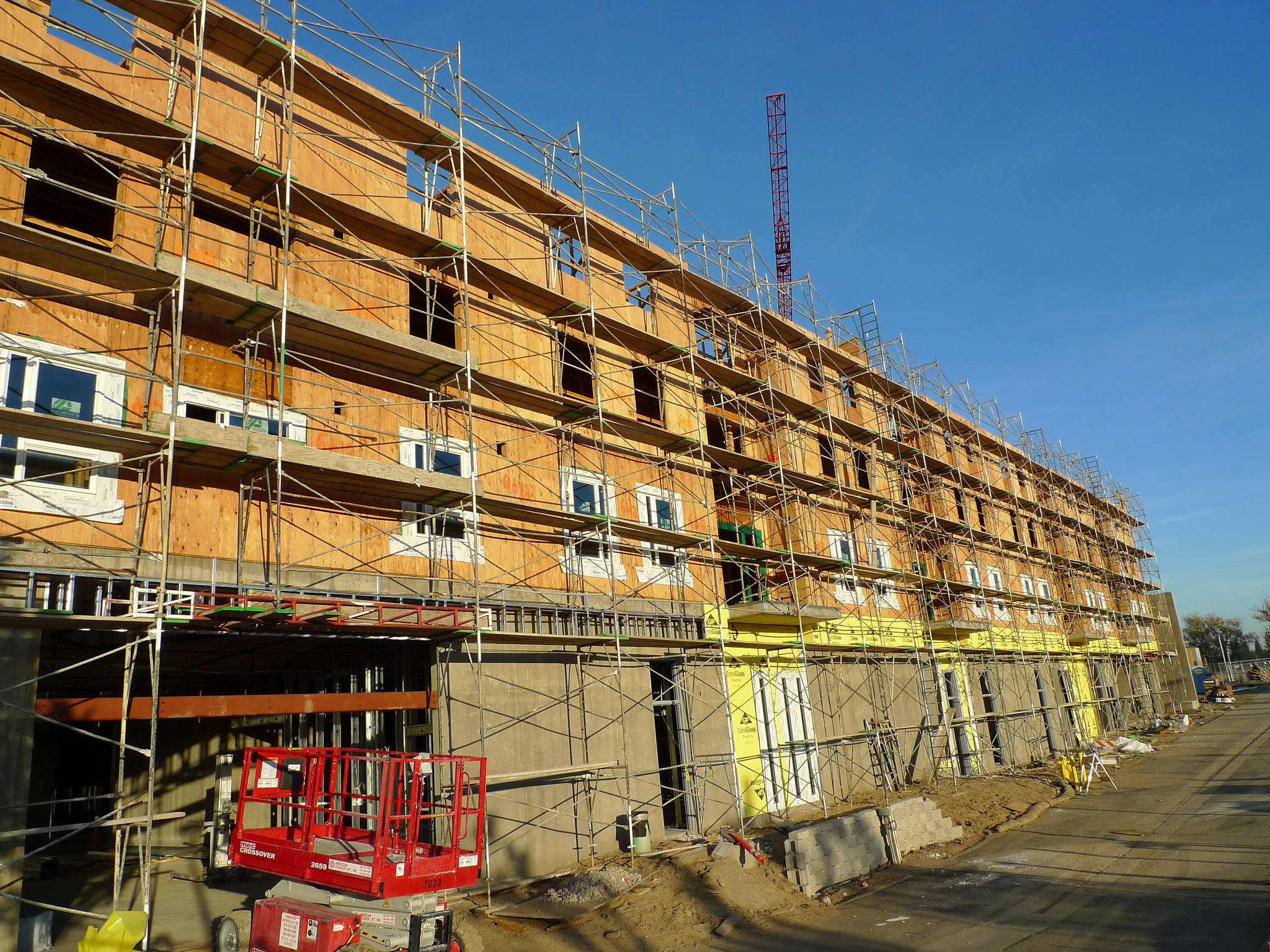Bringing a Region Together Around Housing

California needs more housing. The cost of housing is too high and options available are too limited. These factors are threatening the prosperity of our State. There is little opposition to any of the preceding statements. But friction often emerges as the details of proposed solutions are explored. What type of housing is needed? Where should housing be built? What codes and standards should dictate development? Who should pay the direct and ancillary costs for development? Bringing jurisdictions, developers, residents, and other directly interested stakeholders to consensus on these matters can be grueling. But the payoff has generational impact on the vibrancy of a region.
Stanislaus County initiated the Housing Stanislaus effort to build a common vision for housing in Stanislaus County, and has engaged Valley Vision to facilitate the effort. Valley Vision will work with stakeholders of all backgrounds and interests to establish a shared understanding of the needs, challenges, and opportunities associated with housing in Stanislaus County. That information will be used to build a unified and actionable countywide vision and strategy framework that takes into account priorities, policies, and investments to accelerate affordable and market-rate housing in Stanislaus County.
Valley Vision’s goal is to keep all parties focused on the collective best interest. It will require sacrifices by some, creative solutions by many, and active contribution of ideas and perspectives by all. Valley Vision will be engaging the diverse stakeholders through interviews, listening sessions, surveys, and other forums to collect as much insight as possible, test ideas, and find consensus on what is needed.
All interested parties should keep an eye on the HousingStanislaus.org website (under construction but will be launched soon), or sign up for the Housing Stanislaus email newsletter to track progress and discover opportunities to weigh in.
To keep up with Valley Vision’s work to advance livability in the Sacramento region, subscribe to our Vantage Point email newsletter!
Alan Lange is Valley Vision’s Managing Director, and project lead for Valley Vision’s Healthy Communities Impact Area.
How COVID-19 is Reshaping the Region’s Housing Crisis

The severity of California’s housing crisis is well-documented, as is its impact on the state’s economic development and livability. The lack of housing supply, coupled with the resulting detriment to quality of life, is a consistent and pressing threat that the region has faced in the last decade. The COVID-19 pandemic exacerbates this problem, and adds a new sense of urgency to the ongoing struggle of ensuring that every person has access to this most basic need.
From a housing crisis perspective, there are two things to consider. First, there is the immediate fallout: How can homeless individuals protect themselves without ready access to shelter and sanitation? How can people self-isolate if their living situation is an overcrowded apartment?
Then, of course, there are the medium and longer-term implications. In the economic recession that is likely to follow — one that many experts predict will be even worse than the 2008 downturn — will California be able to meet its goal of 180,000 new homes each year? Even before the pandemic, the state was falling far short of this, only averaging about 80,000 a year, according to the California Department of Housing and Community Development (HCD).
The Immediate Fallout
On March 18th, Governor Newsom, signed an Executive Order that released emergency funding and granted local flexibility on spending and building shelters. “People experiencing homelessness are among the most vulnerable to the spread of COVID-19,” he said. “California is deploying massive resources to get these vulnerable residents safely into shelter, removing regulatory barriers and securing trailers and hotels to provide immediate housing options.” On April 3rd, he announced that nearly 900 homeless Californians had been placed into hotels and motels. While this swiftness of action is admirable, there is still much work to be done to address the needs of most of the homeless population in California.
It’s not just the homeless population whose increased susceptibility to COVID-19 is a direct result of the state’s housing crisis. California has the country’s highest rate of crowding within its renter-occupied housing units, the result of low housing supply and high costs. Those living in overcrowded households are simply unable to comply with many of the Center for Disease Control’s recommendations, such as self-isolation, which says that individuals showing symptoms should separate themselves from other members of their household “by staying in a specific ‘sick’ bedroom or space and using a different bathroom (if possible).”
A State of Emergency in California was declared on March 4th. The shelter-in-place orders that followed across numerous counties and cities meant that many businesses were forced to temporarily close their doors or scale back operations could no longer pay their employees’ wages. Approximately 1.6 million people statewide have filed unemployment claims since March 13. Individuals who are unable to make rent payments face the threat of eviction, especially in California, where more than 3 million households — a majority of renters — pay more than 30 percent of their income toward rent, and more than 1.5 million households pay more than 50 percent toward their rent. To address this, Governor Newsom issued an Executive Order declaring a moratorium on evictions. The moratorium only applies, however, if the tenant can prove that their inability to make rent is due to reasons related to COVID-19, such as a loss or reduction of income from reduced hours or being laid off. Under this moratorium, evictions not covered by its grounds can still be carried out, and there are concerns among tenant advocates that the wording of the Executive Order makes its protections unclear and insufficient. California’s courts have taken it a step further: the Judicial Council suspended eviction and foreclosure proceedings statewide until 90 days after the COVID-19 State of Emergency is lifted.

Medium and Longer-Term Implications
When the dust settles from the worst weeks of the pandemic, the economic recession that follows will impact housing policy and priorities, although what that looks like remains to be seen.
On the one hand, the urgency of the COVID-19 response could create some momentum for more aggressive and effective housing action in the medium and long-term. On the other hand, the economic fallout and anticipated recession could slow construction, stalling efforts to increase supply and further driving up costs. If that’s the case, those already suffering the most from housing unaffordability will become even more cost-burdened.
One takeaway from the last recession is that, when the economy begins to recover, housing construction and funding for low-income housing programs cannot be left behind. If this is the case, the result is “the housing crisis we were living in before COVID-19 hit: sky-high rents, declining homeownership, widespread gentrification and displacement and rising homelessness.”
There are lessons to be learned in every crisis. In the housing space, the COVID-19 pandemic highlights the need for action informed by data. An inaccurate homelessness count makes it difficult to put together an adequate plan of action in an emergency situation. There’s also no consensus on exactly how many new housing units are needed statewide to address the supply gap, and conflicting assertions can muddle a strategy for how to most efficiently and appropriately use resources, especially in a recession. The HCD — responsible for determining the regional housing needs assessment for each region — estimates that approximately 1.8 million new housing units are needed by 2025, taking into account projected population and household growth. However, other analyses from organizations such as the Embarcadero Institute and the McKinsey Global Institute have noted a range of 1.5 million to 3.5 million new housing units.
Housing the people of California must remain a high priority throughout this health crisis. This pandemic is a reminder of how closely housing and healthcare are intertwined, and that the latter cannot exist when the former is not accessible and affordable.
Isa Avanceña is a Valley Vision Project Associate supporting the Board of Directors, and the Innovation & Infrastructure and Leadership and Civic Engagement Impact areas.